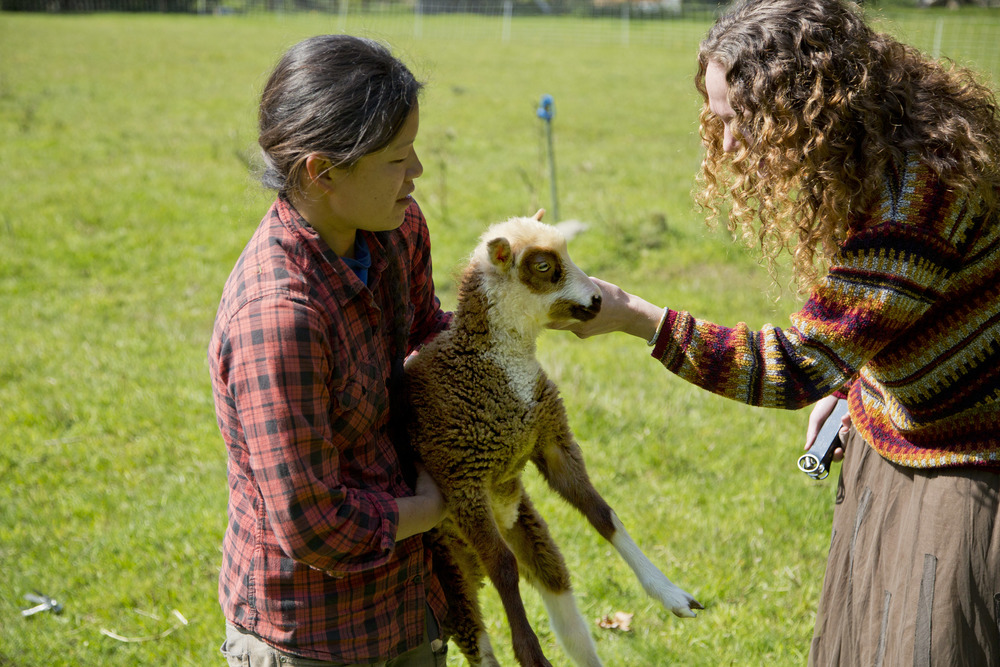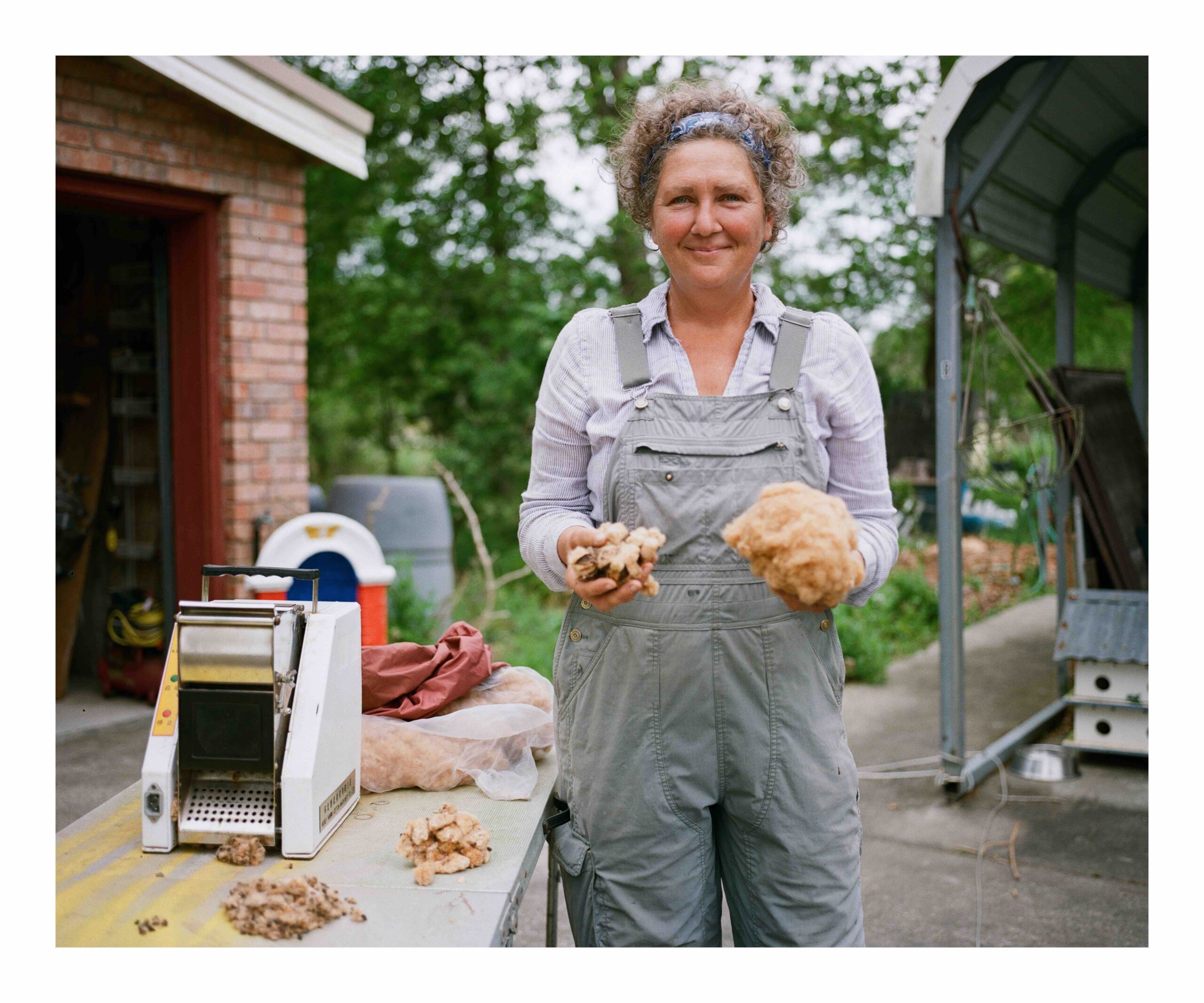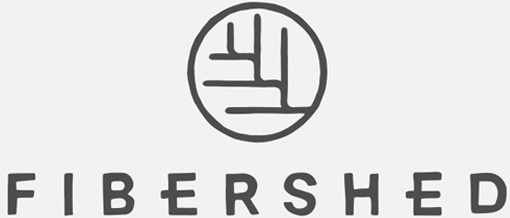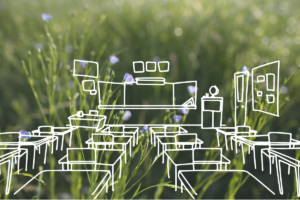Affiliate Program
The Fibershed Affiliate Program supports an international grassroots network that promotes the development of regional fiber systems communities, including economic and non-economic growth, in the form of building relationships and new global networks.
Where is fiber grown & raised in your community? How is fabric made, and who sews, knits, or makes clothing?
Exploring these questions presents the opportunity to get to know your fibershed — the geographical landscape that defines and gives boundaries to a natural textile resource base. Awareness of this bioregional designation engenders appreciation, connectivity, and sensitivity for the life-giving resources within our homelands.
> Find a Fibershed Affiliate in your region here.
Read on to learn more about the Fibershed Affiliate Network and how to form a Fibershed Affiliate.
(at left, flax grows in a western Wisconsin field, part of the Three Rivers Fibershed. Photo by Andrea Myklebust.)

Fibershed Affiliate Projects
Fibershed Affiliates are grounded in place-based community organizing efforts that work to connect fiber farmers, processors and artisans. Fibershed offers Affiliate members ways to share knowledge, collaborate on solution-oriented projects, build community, and enhance their organizing efforts, through online meetups, educational webinars, trainings, networking, microgrants, Working Groups, and project feedback.
> Explore the Fibershed Affiliate network through our Threading Resilience Zine.
From design challenges to community education projects, the Fibershed Affiliate network includes over 70 groups worldwide with a diverse array of interests and a shared goal of strengthening regional fiber systems.
Examples of these efforts include:
- Connecting designers and makers with local materials and landscapes through Design Challenges, like Rust Belt’s One Year, One Outfit Project and Chesapeake Fibershed’s Sustainable Cloth Challenge.
- Developing educational curriculum to connect students and their families with circular, soil-to-soil textile systems, like Fibershed Nederland.
- Organizing a Carbon Farming Network and Co-op, which the New York Fibershed Affiliate has done by connecting fiber producers to land stewardship guidance to restore ecosystem health, and growing local supply chains with Climate Beneficial™ verified fiber.
- Creating a community cloth prototypes — grown, made, and celebrated within your bioregion: the Western Mass Fibershed local cloth initiative and Bristol Cloth Project (within the South West England Fibreshed) are two examples.
- Developing fiber systems research projects to better understand and foster local fiber and dye production — for example, the Acadiana Fibershed is focused on reviving Acadian Brown Cotton, and the Rust Belt Fibershed is exploring the viability of local flax for linen, and the abundance of alpaca fiber, while the Prakriti Fibershed is piloting a cotton system that regenerates soil health with traditional farming methods
- Mapping local supply chains and developing Regional Fiber Sourcebooks — like that of the Southern California Fibershed — to showcase the natural fiber in their regions.

Joining the Affiliate Network
We are currently not accepting new applications for regional Affiliates. Find your nearest Fibershed Affiliate in the Affiliate Directory, and sign up for Fibershed’s email newsletter to hear about updates to the Affiliate Program.
In the meantime, here’s how you can start building a Soil-to-Soil fiber system community in your region.
- Connect with nearby Fibershed Affiliates to learn more about what’s happening in your broader region.
- Reach out to local community members and organizations across the “Soil to Soil” cycle, such as fiber animal or breed groups, textile and fiber arts guilds, land stewardship organizations, and educational institutions.
- Develop a preliminary vision for your regional fiber and dye system. This can mean identifying a key challenge or resource in your community or planning a specific project to support your community.
- Brainstorm and draft any public-facing materials that will support your efforts, like a mission statement, descriptive information about your geography and vision, and even visual assets like photos of local fiber, dye, and skills.
- Check out what other Fibershed Affiliates are doing by following them on social media (searching “Fibershed” or “Fibreshed” on Instagram or Facebook is a good place to start), listening to our podcast, or reading Affiliate directory pages, and reflect on what approaches and projects might make the most sense in your home community.
- Explore Fibershed’s extensive list of resources, from Fibershed, the book, to case studies to toolkits for designers and brands.



